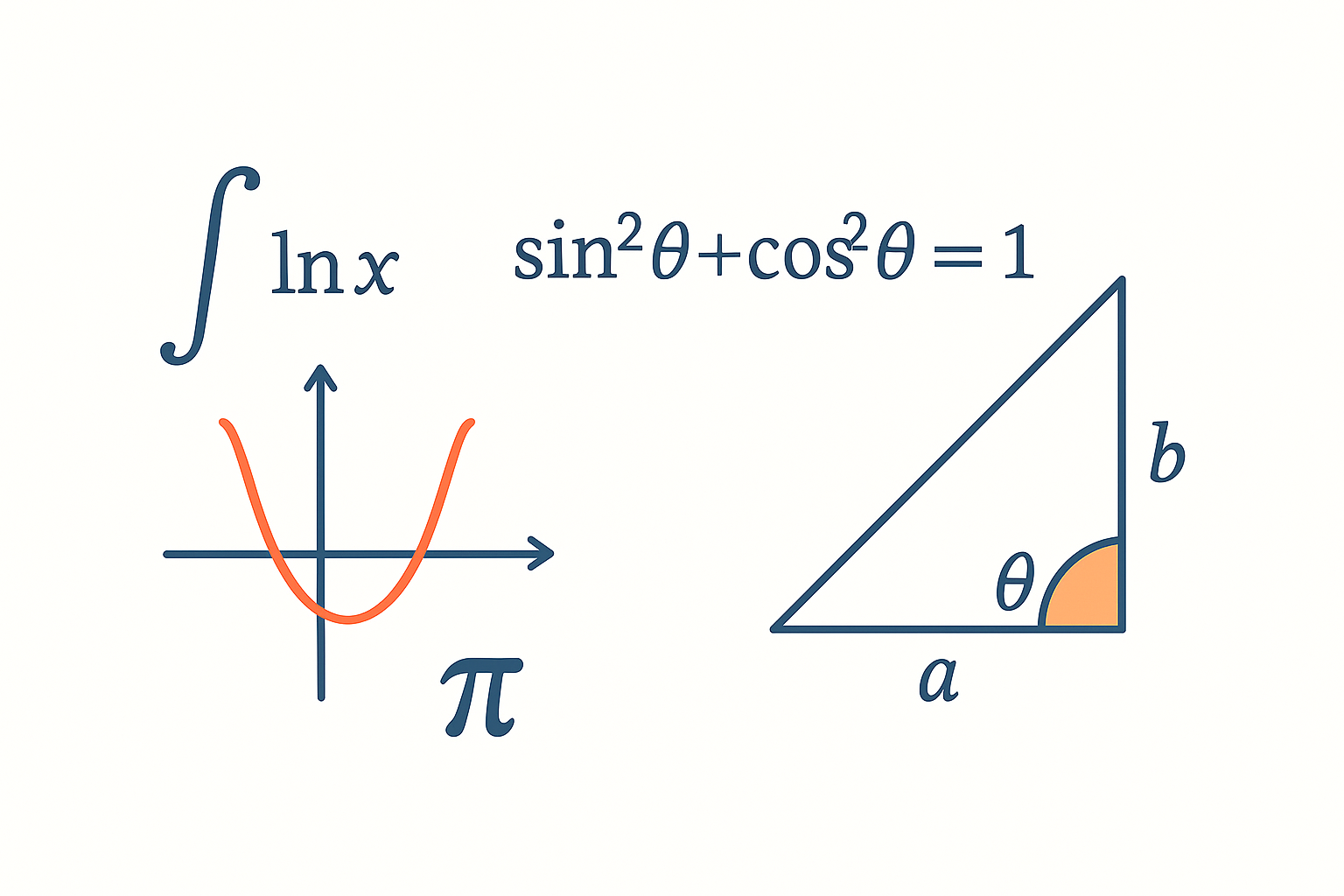Upper Secondary
Additional Mathematics
Additional Mathematics is known for being rigorous and confusing — but it's also incredibly rewarding. We support students in building a strong foundation in algebra, calculus, and trigonometry, while developing the problem-solving mindset needed for O-Level success. Our lessons focus on structure, clarity, and technique, helping students turn complex-looking problems into something they can handle with confidence and logic.
Our Additional Mathematics philosophy
Additional Mathematics isn't just a subject — it's a way of thinking logically, solving problems methodically, and building resilience in the face of challenging questions. We believe every student can learn to approach complex problems with clarity and structure, given the right guidance and space to grow. At Inflex, we focus on making each topic manageable, connecting new ideas to prior knowledge, and building confidence through step-by-step understanding.

Thinking in Steps
We teach students to break down complex math problems into logical steps — a skill that builds confidence in exams and in life
Growth Through Struggle
We help students embrace challenge and develop resilience — because deeper understanding comes from working through difficulty.
Consistency Over Cramming
We focus on steady progress through practice and reflection — because mastery takes time, not shortcuts.
Additional Mathematics Syllabus
Algebra
Master essential algebraic techniques, including solving equations, simplifying expressions, and analysing functions. These skills are foundational for success in O-Level exams and higher-level mathematics.
Quadratic Functions
Learn to solve quadratic equations using factorisation, completing the square, and the quadratic formula, and analyse graphs of parabolas.
Formulas
Equations and Inequalities
Solve linear and quadratic equations and inequalities. Interpret solutions on number lines and understand how the discriminant affects the nature of quadratic roots.
Formulas
| Discriminant | Number of roots | Intersection with x-axis |
|---|---|---|
| No real roots | Curve does not intersect x-axis | |
| 1 real and distinct | Curve touches x-axis once | |
| 2 real and distinct | Curve cuts x-axis twice |
Surds
Simplify and manipulate surds using standard rules. Learn how to rationalise denominators and work with conjugate surds to find exact values.
Formulas
| Law | Rule |
|---|---|
| Law 1 | |
| Law 2 | |
| Law 3 |
| Surd | Conjugate | Result of multiplying conjugate pairs |
|---|---|---|
Polynomials and Partial Fractions
Factorise polynomials using the Remainder and Factor Theorems. Perform polynomial division and decompose rational expressions into partial fractions.
Formulas
| Type | General Form |
|---|---|
| Linear | |
| Quadratic | |
| Cubic |
| Meaning | |
|---|---|
| Degree of Degree of | Proper fraction |
| Degree of Degree of | Improper fraction |
| Denominator | Partial Fraction |
|---|---|
Binomial Expansions
Expand powers of binomials using the Binomial Theorem. Find specific terms and apply combination formulas (nCr) to evaluate expressions efficiently.
Formulas
Exponential and Logarithmic Functions
Solve exponential and logarithmic equations using laws of indices and logarithms. Understand the relationship between logs and exponents, and sketch graphs with key features.
Formulas
| Law | Rule |
|---|---|
| Law 1 | |
| Law 2 | |
| Law 3 | |
| Law 4 | |
| Law 5 |
| Law | Rule |
|---|---|
| Product Law | |
| Quotient Law | |
| Power Law | |
| Change of Base |
Geometry and Trigonometry
Build a solid foundation in spatial reasoning and geometric analysis. From coordinate geometry to trigonometric identities and proofs, this topic equips students with essential tools to solve real-world and O-Level exam problems with clarity and precision.
Coordinate Geometry
Understand how to calculate gradients, midpoints, and distances between points on a plane. Learn to derive equations of lines and circles, and apply geometric principles to prove collinearity, perpendicularity, and parallelism.
Formulas

Applications of Straight Line Graphs
Convert non-linear equations into linear form to simplify data analysis and graphing. Learn to plot relationships involving exponential, logarithmic, and power functions on straight line graphs.
Formulas
| Non-linear form | Linear form: |
|---|---|
Trigonometric Functions and Graphs
Master the graphs of sine, cosine, and tangent functions. Identify amplitude, period, asymptotes, and interpret transformations of trigonometric graphs in real-life and mathematical contexts.
Formulas



| TOA CAH SOH |
|---|
| Identities |
|---|
| Identities |
|---|
| Identities |
|---|
Trigonometric Equations and Identities
Solve trigonometric equations using identities such as Pythagorean, reciprocal, and addition formulae. Understand inverse trigonometric functions and apply R-formulae to simplify and solve expressions.
Formulas
| Function | Domain | Range |
|---|---|---|
| Identities |
|---|
| Identities |
|---|
| Identities |
|---|
Proofs in Plane Geometry
Strengthen your deductive reasoning by using congruence and similarity tests (SSS, SAS, AAS, AA) and properties of polygons and circles. Prove geometric relationships involving triangles, parallelograms, cyclic quadrilaterals, and more.
Formulas
























Calculus
Build a strong foundation in differentiation and integration to solve problems involving change, motion, and area—key skills for O-Level Additional Mathematics.
Differentiation
Learn to find derivatives using key rules and apply them to study gradients, curves, and function behavior.
Formulas
| Derivatives |
|---|
| Trigonometric functions |
|---|
| Trigonometric functions |
|---|
Application of Differentiation
Use derivatives to solve rate of change problems, find turning points, and analyse motion through graphs.
Formulas
| sketch |
| sketch |
| sketch |
| sketch |
| meaning | |
|---|---|
| maximum point | |
| minimum point | |
| use first derivative test to further proof |
Integration
Understand integration as the reverse of differentiation and apply it to solve equations and evaluate areas.
Formulas
| Integrals |
|---|
| Trigonometric functions |
|---|
| Exponential functions |
|---|
Application of Integration
Apply definite and indefinite integrals to calculate area under curves and between lines for real-world contexts.
Formulas
| Definite Integrals |
|---|




Kinematics
Use calculus to relate displacement, velocity, and acceleration, and interpret motion in physical problems.
Formulas
